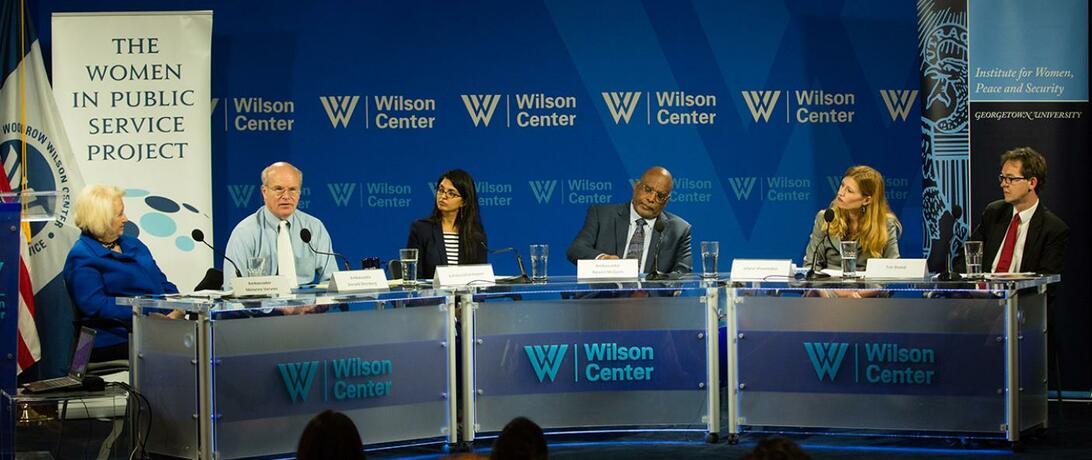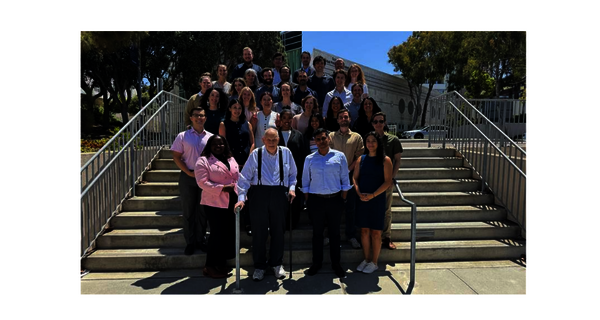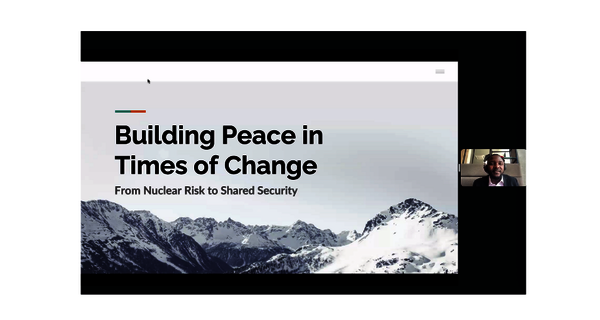
Why, at One Earth Future and Our Secure Future, do we say that women and gender equality make the difference? Why view the world through a gender lens?
Women make up half of the global population and focusing on gender parity helps elevate the need for intentionally prioritizing diversity in all aspects of our work. By embracing this reality we broaden our scope as practitioners to include concerns that range from health and personal safety to the environment, economics, technology, and other issues.
As we celebrate Women’s History Month and International Women’s Day, we are proud to highlight the critical importance of the work that Our Secure Future is doing in taking the vision of the Women, Peace and Security agenda that has become key international and national policies and implementing this into pragmatic practices that increase peace and create transformational change.
Vision
Robust evidence shows that peace agreements, economic structures, and governance all become more effective with the full participation of women and the inclusion of a gendered perspective. When women have not just access but equality and meaningful participation in systems and structures of governance and conflict resolution, peace spreads.
Implementing this reality is at the core of the Women, Peace, and Security vision where actors understand that gender impacts every aspect of national security and that the full participation of women leads to better security outcomes. Women, Peace and Security has had over 20 years of history based on decades of feminist thought leadership and action by women-led civil society organizations.
During the 1990s, along with years of lobbying by civil society and organizations, UN peacebuilding and keeping operations saw the continued application of gender-blind military responses, often ignoring the particular needs of women in conflict-affected zones and excluding women’s voices from peacekeeping operations and peace agreements.
Women, Peace and Security aims to solve these challenges and even more gender-related issues as a policy framework that recognizes that peace and the prevention of violent conflict are only sustainable when women are equal partners in prevention, relief and recovery, and the building of lasting peace through equitable governance. By pushing through gender blindness, WPS understands that women face unique challenges and are often targets of violence, and including their voices is the only way to ensure wide-ranging recovery, stability, and, eventually, equality. Applying this framework includes gender analyses that take into account all of these factors.
The WPS agenda asserts that if you take meaningful participation, add more resources, and pair it with a broader political will, there will be better security and peace outcomes for everyone, not just women.
Policy
The UN Security Council, after years of persistent advocacy by civil society organizations in response to gender-blind responses to conflict, unanimously passed Resolution 1325 on Women, Peace and Security in October 2000 that officially acknowledged women’s exclusion from peacebuilding and security and offered a call to action. It recognizes the critical role women play in conflict prevention and resolution and the positive peace and long-term security outcomes that come through participation.
The original resolution identifies four pillars: prevention, participation, protection, and gender mainstreaming. The four pillars are cross-cutting in every sector. However, most Women, Peace and Security National Action Plans refer explicitly to the pillars of Prevention, Participation and Protection, and add in a focus on Relief and Recovery, and WPS National Institutions. Using a gender perspective is a central objective of all WPS activities and NAPS.
Prevention involves including women in preventing and addressing all forms of violence before, during, and after conflict.
Participation means increasing women’s representation in decision-making at all levels.
Protection means a gender perspective must be applied to all protection measures. This means including women’s voices and experiences into policies and activities designed for the protection of civilians in conflict and in humanitarian assistance, and addressing sexual and gender-based violence perpetrated on men, women, boys, and girls in all phases of conflict and post-conflict situations.
Gender is mainstreamed throughout the Protection, Prevention, and Participation pillars by using a gender perspective to address the different needs, priorities, and values of all people affected by conflict or crisis–women, men, boys, and girls. Gender equality improves security outcomes when a gender perspective is applied throughout peace and security decision-making in legislation, policies, and programs.
In the United States, the Women, Peace, and Security Act (P.L. 115-68) was passed on October 6, 2017. The law enables Congressional oversight on the U.S. efforts to integrate gender perspectives across all diplomatic, development, and defense work in conflict areas with a national strategy that includes coordination with international partners, assistance to female peacebuilders, gender analysis in program design, and civil society support.
Our Secure Future focuses on the following to advance the WPS agenda in the United States and globally. Our Secure Future:
- Provides direct country engagement and expertise on implementing WPS policies through support to the WPS Congressional Caucus and providing technical assistance on National Action Plans globally.
- Convenes multiple stakeholders to implement gender equality strategies in the military, the private sector, media, the government, and all aspects of public life.
- Amplifies women's voices. Consults with women’s social justice and peace organizations to inform security decision-making.
- Invests in women’s funds for peacebuilding and development.
Practice
While many understand the policy objectives and policymakers are increasingly becoming aware of the critical need for WPS measures, implementing the right changes remains a struggle for institutions. While we understand the policy objectives, actually putting policy into practice remains a key challenge that Our Secure Future works to address. Though we see signs of progress, gender equality is far from being achieved.
It’s not uncommon to hear WPS referred to as an unproven concept, despite extensive concrete evidence of the efficacy of the approach. It is also not uncommon to hear it be discussed as a “Western agenda,” despite origins in the developing world and conflict zones. Those who do know about Women, Peace and Security are often unaware of how it intersects with every aspect of national security, and how they can help advance implementation.
While some may identify the WPS agenda by its parts (sexual violence, countering violent extremism, gender parity, etc.), the whole of the Women, Peace and Security agenda is a movement of transformation, shifting entire systems of policy creation and getting people to start thinking differently about the problems they're trying to solve by including perspectives that haven’t been included. The missing gender link has the power to address many critical issues globally today.
Thankfully, there is a policy and a framework that enables hope. Our Secure Future focuses on advancing the Women, Peace and Security agenda by using a gender perspective in all policy decision-making. Our aim is to enable policymakers to better employ a gender perspective in any policy, program, and program implementation. When the use of a gender perspective becomes standard practice, decision-makers can be more effective at implementing peace and security policy mandates. Our work includes a global and domestic focus:
- Women, Peace and Security (WPS) Congressional Caucus
- National Action Plans
- Thought Leadership and Research
- Mobilizing Men as Critical Partners
Looking Ahead
Our Secure Future is also looking forward to new trends that will affect the Women, Peace and Security agenda within technology. We know from our and others’ research that women are often the first to experience violence, and gendered experiences are a powerful indication of larger cracks in societies.
Technology is no different. Creating a digital ecosystem without incorporating gender has a negative impact on women, but also has broader ramifications for the future of peace and security. The digital ecosystem, the future of peace and security processes, and much of society will be governed through the digital spaces and systems we are creating right now.
Project Delphi was launched to apply the Women, Peace and Security framework to the emerging digital ecosystem. The project seeks to identify systemic gender problems, analyze implications for peace and security, and develop more inclusive ways to approach technology norms and policies in the coming years.
What Can You Do?
We know that achieving gender equality will take multiple organizations, actors, and partners, and there are things that everyone can do today to work towards this vision.
- Always Do a Gender Analysis: Gender analysis has helped address everything from the pay gap to emergency food assistance.
- Always Include Women: Inviting women to join panels is not enough. They must be included in meetings and asked about in projects. Include women authors in reading lists and female sources in news articles.
- Lead by Example: Creating a culture of inclusion starts with you. Ask women to speak up. Ask your supervisors to implement training. Add gender analysis to a project. See what happens and then tell your story.
- Create Accountability: Set public standards and metrics to hold your organization accountable.
- Promote Your Work: Sharing your work will provide more evidence for policymakers on how critical this issue is.
Article Details
Published
Program
Content Type
Opinion & Insights

